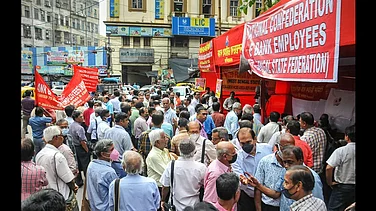Union Finance Minister Nirmala Sitharaman on October 18 said the government has been closely monitoring prices of 54 consumer goods since the goods and services tax (GST) rate cuts took effect on September 22. While addressing a press conference on the GST Bachat Utsav in the capital, she added that the benefits of lower taxes have reached the end consumer — except in the case of high-end cement, which is called the Portland Pozzolana cement (PPC), where the reduction has been slightly below expectations.
“Since September 22, we have been getting inputs from zonal formations on 54 items to ensure that the tax benefit is reaching the end consumer. Not even in one item has the benefit not been passed on,” added Sitharaman. “There is, however, one variety — the Portland Pozzolana cement — where the expected rate of passing on is less than anticipated.”
She further stated that this marginal deviation resulted from situations in which input taxes were still higher than output rates, requiring minor adjustments before goods were delivered to customers. “Where it is expected to have 10 percentage points going as a benefit, it might end up having 8.25% being passed on actually,” she explained.
According to the finance minister, field reports from 21 zones verified that prices for clinical nappies, shampoos, talcum and face powders, milk and milk products, kitchen utensils and household metalware were widely transmitted.
“For shampoos, the rate came down from 18% to 5%. The expected weighted average reduction was around 11%, but the actual decrease in retail prices has been 12.36%,” she said. Talcum powders saw an 11.77% drop, face powders 12.22%, and clinical diapers — which moved from 12% to 5% — showed a 10.38% fall against an expected 6.25%.
In addition, tableware, kitchen and household articles made of iron, steel, and copper, as well as utensils, showed a 10.24% price cut, significantly higher than the 6.25% expected from the tax reduction, reported Business Standard. Toys such as tricycles, scooters, and pedal cars, which also moved from 12% to 5%, showed a price fall of 8.93% — higher than the expected weighted average of 6.25%. Solar cookers have seen a 6.96% decrease, while umbrellas, including walking-stick and garden types, registered a 9.19% drop in prices.

Government monitors 54 items to ensure GST rate cut benefits reach consumers.
Consumer goods, vehicles and durables see record festive sales after tax cuts.
Next-Gen GST reform simplifies tax slabs, reduces burden ahead of festive season.
The finance minister revealed that rate cuts have surged demand across sectors, with automakers and consumer durables companies reporting record sales since the announcement. Three-wheeler dispatches grew 5.5% year-on-year to 84,077 units, two-wheeler sales reached 21.6 lakh units, and passenger vehicle dispatches touched 3.72 lakh units in just nine days after the September rate cut. Tractor sales more than doubled to 1.46 lakh units during the month.
Retailers of consumer durables also reported significant profits. While a major TV manufacturer reported a 30–35% increase in demand for 43-inch and 55-inch models, Vijay Sales saw a more than 20% increase in sales in September. During the Navratri season, LG Electronics India reported "exponential growth" in sales.
“These numbers show that the rate reduction is actually reaching the common people,” Sitharaman said, adding that the finance ministry has compiled zone-wise data showing consistent price transmission across all monitored categories.
Next-Gen GST Reforms
On 22 September 2025, India implemented its sweeping “Next-Gen GST” reforms—simplifying the tax structure to two slabs of 5% and 18%, replacing the earlier four slabs (5%, 12%, 18%, 28%) and cutting rates on over 200 items. Essentials, household items, and daily goods mostly fall under the lower 5% slab or nil GST.
The GST 2.0 overhaul is aimed to simplify taxation and reduce the financial burden on household, businesses and farmers, bringing relief just in time for the festive season.



























